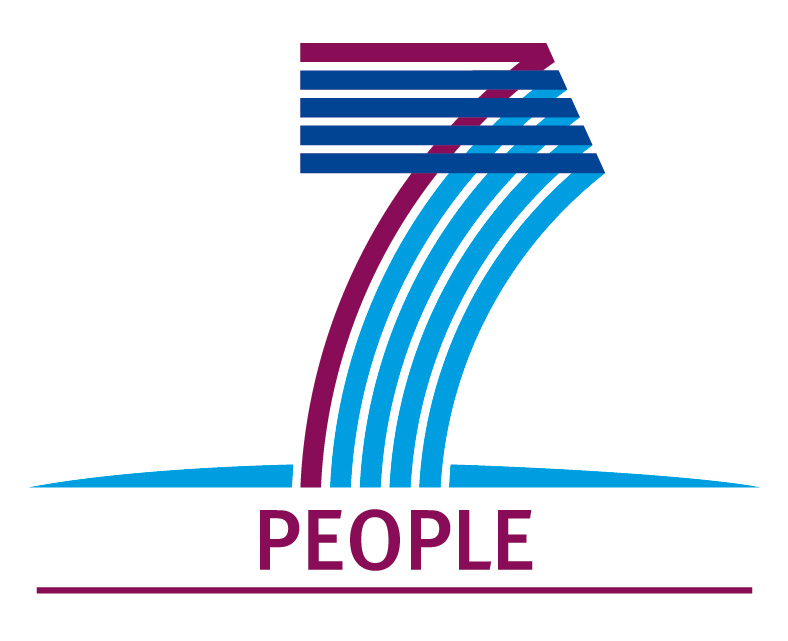Marie Curie Intra-European Fellowship (FP7-PEOPLE-IEF)
"Holographic walking technicolor"
- Grant number: PIEF-GA-2011-300984
- Scientist in charge: Prof. Elias Kiritsis.
- Researcher: Dr. Matti Järvinen
- Duration: From 1st of September 2012 to 31st of August 2014
Introduction
Holographic models for QCD and in general for nonsupersymmetric and nonconformal gauge theories have been the topic of numerous studies since the discovery of the gauge-gravity correspondence. Despite lots of effort, advance toward a holographic dual of QCD has been difficult. In addition to understanding the strongly coupled dynamics of QCD, such a gravitational dual could provide an explicit realization for electroweak symmetry breaking through strong interactions (technicolor). Despite the discovery of the Higgs boson, classes of such theories may still be viable if the Higgs is a composite of fermions.
Objectives
This project marks a significant step toward holographic understanding of QCD by using the so called bottom-up approach. The important ingredients, which have typically been missing in bottom-up studies, are
- Precise input from (noncritical) string theory, following the idea of the improved holographic QCD model of Kiritsis and Gursoy
- Full backreaction between the fermions and gluon dynamics
The latter has usually been avoided in the literature, because it leads to severe technical complications. In this project the problem is addressed head-on. The main objectives are
- Development of holographic description of the phase diagrams of nonsupersymmetric SU(N_c) gauge theories, in particular QCD, with large amounts of fermionic matter
- Construction holographic duals for theories of walking technicolor
As for training, the main objective is for the researcher to learn advanced techniques in holography for strongly coupled systems.
Research work
The research work done during the two years of this project aimed to reach these goals in several steps. The first one was the construction of the basic model, using the so-called Veneziano limit where the string description of QCD is expected to be valid while backreaction is also present. During the first year of the project, the fluctuation analysis of the model was done, giving access to the meson spectrum and the S-parameter, and a generalization finite temperature was constructed. During the second year of the project, finite chemical potential was added, and observables relevant for technicolor applications were studied in detail.
Results
The main scientific results were the following.
- Holographic description of the QCD phase diagram with large amount of fermionic matter, including the structure at finite temperature and chemical potential.
- Analysis of the "conformal transition" between QCD-like and infrared conformal phases, including the behavior of the spectrum and the S-parameter.
In the course of this work, the researcher also achieved the expected skills in string theory and holographic methods through training.
This project combined the expertise of the researcher obtained earlier at the center of excellence CP3-Origins in Odense, Denmark, with the expertise of the Crete Center for Theoretical Physics. The results were presented in some of the most important European conferences in holography and string theory. Collaboration with several European Universities and research institutes also emerged as a part of the implementation of the project, strengthening the ties between these institutes.
Publications:
- M. Järvinen and E. Kiritsis, JHEP 1203, 002 (2012) [arXiv:1112.1261 [hep-ph]].
- T. Alho, M. Järvinen, K. Kajantie, E. Kiritsis and K. Tuominen, JHEP 1301, 093 (2013) [arXiv:1210.4516 [hep-ph]].
- D. Arean, I. Iatrakis, M. Järvinen and E. Kiritsis, Phys. Lett. B 720, 219 (2013) [arXiv:1211.6125 [hep-ph]].
- D. Arean, I. Iatrakis, M. Järvinen and E. Kiritsis, JHEP 1311, 068 (2013) [arXiv:1309.2286 [hep-ph]].
- T. Alho, M. Järvinen, K. Kajantie, E. Kiritsis, C. Rosen and K. Tuominen, JHEP 1404, 124 (2014) [arXiv:1312.5199 [hep-ph]].



